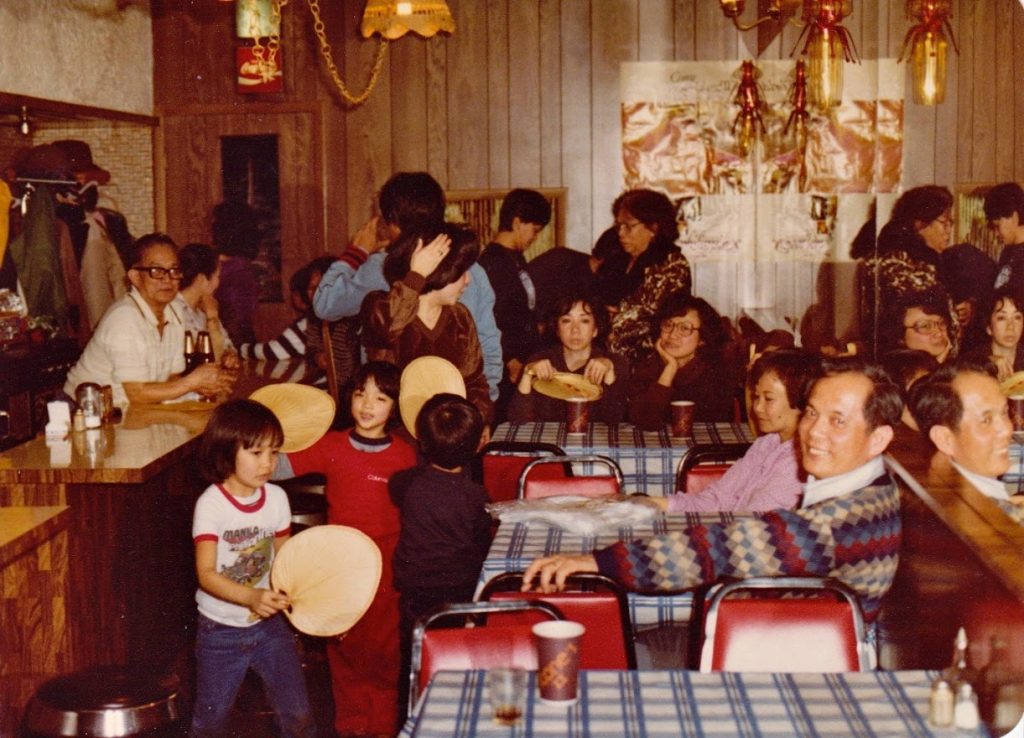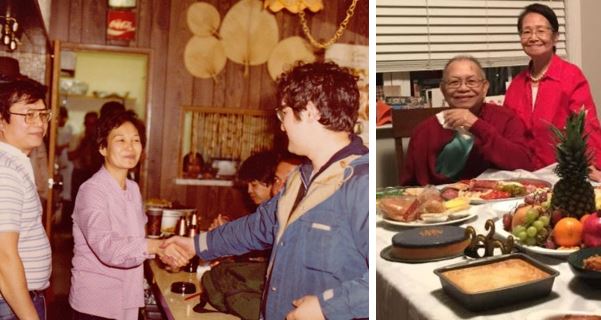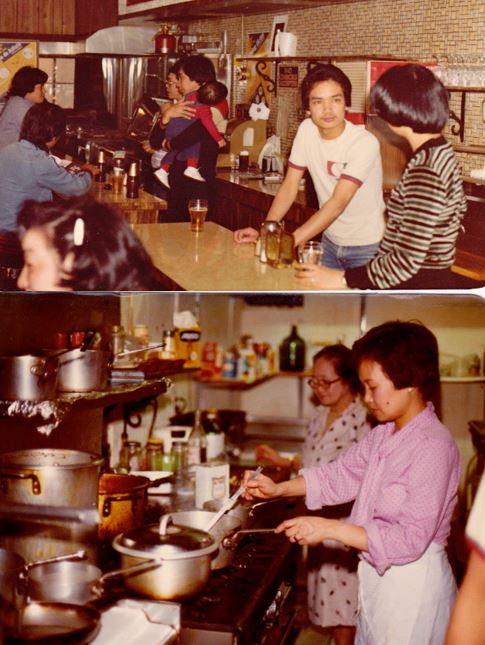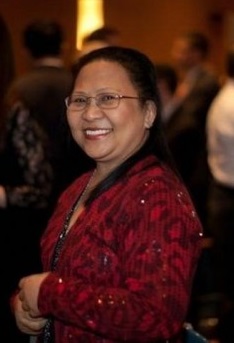Erna’s International Cuisine: A ’70s Queens eatery that fed activists and a spirited community coming into its own

By Cristina DC Pastor
Erna’s International Cuisine in Queens was the watering hole for Filipino Americans in the Seventies, much like today’s Jeepney in Manhattan or Purple Yam in Brooklyn.
It was a restaurant where families celebrated special occasions, like a birthday party or a graduation. For families in no mood for home cooking on a Sunday, they would walk to 73-10 Roosevelt Avenue in Jackson Heights after coming from church. Usually the place would be packed, but always they would be welcomed with a kindly smile from owners Ernie Hernandez and his wife Aida who would scurry to find a way to accommodate everyone. Ernie is from Lemery, Batangas, and Aida hails from Canlubang, Laguna.
“Mom’s a great cook,” said Erna Hernandez Barenio when interviewed by The FilAm by email. Her mother was assisted by brother-in-law Manny Hernandez, who worked as a chef in Paris. Erna’s was just the right venture for an enterprising immigrant family.
Although Filipino dishes, like Crispy Pata, Palabok, Kare Kare and Lumpiang Sariwa were standard menu, Erna’s International Cuisine also served French fare, such as Escargot, Cordon Bleu, Chicken Coq au Vin, and Filet Mignon courtesy of Manny’s Paris experience.

Erna was 4 years old and one year shy of pre-school when the restaurant opened. It was named after her, being the only daughter.
Erna currently works as a pre-school teacher in North Carolina. She and her husband Brian own Water & Lightning toy company based in NC that manufactures toys made from sustainable wood from the Philippines. While still in NYC, she was an active member of Arkipelago, an organization of artists and community workers promoting conversations on immigrant rights, generational gaps, and racism through arts-related projects.
Catering paved the way
“Mom ran an unofficial daycare in the apartment,” she recalled when the family was still residing in Queens. “Many were kids of neighboring Filipino families. In addition to watching the kids, she was already catering. Between that and the catering, customers were urging them to open a restaurant.”
Which they did in the spring of 1979. Erna’s was mainly a two-person operation with Aida and brother-in-law Manny lording it over the kitchen. Ernie assisted on weekends when he wasn’t working at a bank, and Erna’s Lola Carna, Encarnacion Trinos, helped when she was visiting NYC. Aida hired Pinoy folks from the community as dishwashers, servers, and bartenders.
Little Erna, who loved being with people, was the sassy girl who enjoyed playing host to customers. “I would ‘demonstrate’ the proper way to dip and then eat Lumpiang Shanghai,” was how she recalled her role then.
The Hernandezes were not exactly newbies to the business of running a restaurant.
“My Lola Carna had a small restaurant in Cabuyao, Laguna,” said Erna. “When mom was in high school, they would make bibingka from scratch and sell it at the school. Dad and Tito Manny had an uncle that owned a bakery and I think they helped out there.”
Erna’s International Cuisine was a go-to place at a time when there were only a handful of Filipino eateries in New York City. Today, there are more than 20 across the five boroughs based on a curated list by Zomato.com. Many younger FilAms have gone into the business seeing how Americans are starting to appreciate the ‘revamped,’ more modern take on Filipino cuisine.


Aida recalled only two other Pinoy restaurants at the time: Nipa Hut in Queens and Maharlika in Manhattan. PhilAm Food Mart was another popular Filipino establishment at a time — when rent was anywhere from $700 to $800 a month — but it was more of a grocery store. Erna’s had eight tables plus counter service, and a maximum capacity of 40 people.
“It was fairly small,” said Erna.
Despite the cramped dining, it served as a community gathering place for “loyal customers” like the KDP (Union of Democratic Filipinos) and the Jaycees whose members would go there after events or rallies or get Erna’s to cater on special occasions.
Visiting politicians from the Philippines, such as senators Ernesto Maceda and Rene Saguisag, had feasted there as well. Actors Bert Leroy and Eddie Gutierrez introduced their pots and pans business at a private home with Erna’s providing catered food. Aida recalled to her daughter how once there were large orders of Rellenong Manok. That’s how she came to know that former President Diosdado Macapagal was in town! Actress Amalia Fuentes had been hosted there by friends.
Amy Besa and Romy Dorotan of Purple Yam were loyal customers.
Said Erna, “Every time I would bring my parents with me to Purple Yam, they enjoyed reminiscing about those days. In fact, when they celebrated their (book launch), they gave a special shoutout to Mom and Erna’s…for feeding us poor activists at the time and for laying the groundwork in promoting Filipino food here in NYC.”
The restaurant was in business for three years. It became entirely a catering business for a few decades after that.
“According to Mom, the overhead was high, and there was little profit even with the steady customer base,” said Erna. The Hernandezes realized there was more income from catering and “it didn’t make sense financially to keep the physical restaurant going.”
Aida, who is now 78 years old and living with Erna’s family in North Carolina, looks back with fondness at those years when they provided comfort to a community with food created from the family’s recipes. It’s like passing on a well-loved tradition. She noted how some of today’s Filipino restaurants have a “twist” to the food they serve and are not strictly traditional.
“I see it as a good thing,” she said. “Any kind of broadening of Filipino food and palate to the greater community is a good thing.” But for her, traditional cooking is more satisfying because it warms the heart and brings back memories of home.

© The FilAm 2020










